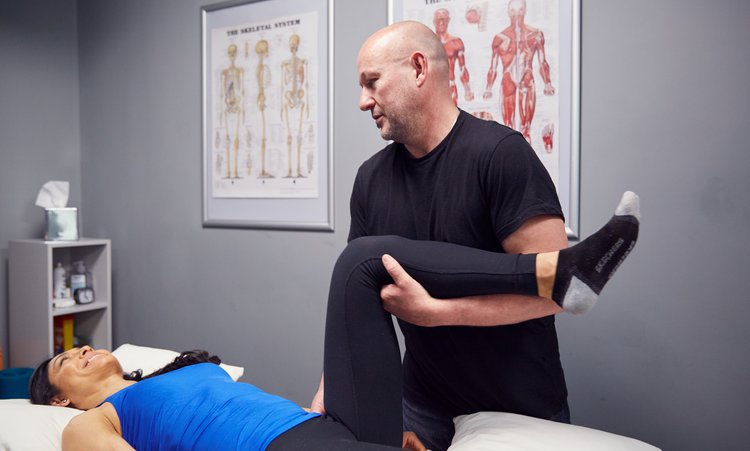Soft Tissue Therapy For Runners Feb 07 2018

With only three months until the London Marathon, most competitors should have started their strength & conditioning programme and starting to build up the miles.
How many competitors are optimising their recovery time?
Muscle soreness appears many hours after participation of the damage-inducing exercise and peaks 24–48 hr post exercise - known as - delayed onset muscle soreness (DOMS). The fact that soreness peaks 24–48 hr post exercise and any swelling becomes pronounced several days after exercise suggests that damage may be exacerbated after exercise. Muscle damage is initially caused by mechanical strain on the muscle and this damage is exacerbated by the inflammatory response in the days after the exercise. The inflammation occurring after the initial trauma incurred by long runs is likely responsible for the continued damage (1). DOMS accompanies muscle damage and may be caused by a combination of factors including swelling, increases in noxious chemicals and by-products of inflammation.
Whether you have just started your training programme or you are well on your way, Soft Tissue Therapy (STT) and sports massage can be used to assist in recovery from the effects of strenuous exercise. STT is also important in rehabilitation to increase range of movement, decrease pain, anxiety and reduce stiffness.
Soft tissue therapy has the potential to reduce the inflammatory process associated with the micro tears sustained during strenuous exercise. STT also helps facilitate early recovery, and provide pain relief from muscular injuries. By altering signalling pathways involved with the inflammatory process STT is reported to also decrease secondary injury, reduce nerve sensitisation resulting in the reduction or prevention of pain and increased recovery from tissue damage (2). Changes in parasympathetic nervous system activity as measured by heart rate, blood pressure, and hormonal levels such as cortisol (known as the stress hormone) following STT result in a relaxation response (3).
In general athletes and exercise practitioners have assumed that increased training was the ultimate prescription for improvement. It is well accepted that overload is necessary for improvement, however, overtraining results in a breakdown of tissue at some level, thus impairment or regression of performance rather than improvement become normal. Overtraining is usually thought of strictly in terms of training, yet overtraining might also be expressed as under-recovering. If the recovery rate can be improved greater training volumes would be possible without incurring the negative consequences of overtraining (4).
Studies have shown that STT initiated immediately after exercise and 48 hours post exercise were both effective in reducing muscle oedema and decreasing the number of damaged muscle fibres compared to exercise only and non-massaged controls. Soft tissue therapy can mitigate secondary injury associated with intense exercise, thereby reducing tissue damage and accelerating recovery (5). Rest, diet considerations and water are an important part of the recovery process and should not be overlooked.
Visit Shaun and Vesna for STT at Executive Physiotherapy in Central London and optimise your training today!
References:
(1) Clarkson, PM,Hubal, MJ. (2002), Exercise-induced muscle damage in humans. American Journal of Physical Medicine & Rehabilitation,81(Suppl), pp. 52–69.
(2) Christine Waters-Banker, PhD, ATC. Esther E. Dupont-Versteegden, PhD. Patrick H. Kitzman, PhD. Timothy A. Butterfield, PhD, ATC, FACSM (2014) Investigating the Mechanisms of Massage Efficacy: The Role of Mechanical Immunomodulation, Journal of Athletic Training ,49(2), pp. 266–273
(3) Pornratshanee Weerapong, Patria A. Hume and Gregory S. Kolt (2005) The Mechanisms of Massage and Effects on Performance, Muscle Recovery and Injury Prevention, Sports Medicine, 35 (3), pp. 235-256
(4) Phillip A. Bishop, Eric Jones, Krista Woods. (2008) Recovery from training: A brief review, Journal of Strength and Conditioning Research, 22 (3), pp. 1015-1024.
(5) Thomas M Best, Scott K Crawford. (2017) Massage and post exercise recovery: the science is emerging, British Journal Sports Medicine, 51 (19), pp.
Share this post: